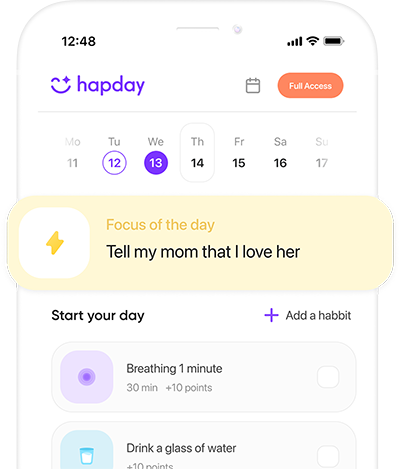Table of Contents
- A Brief Dive into the World of ASD
- Untangling the Knot: What Makes Anxiety Tick in ASD?
- Tactics for Tackling Anxiety in ASD
- Giving Cognitive Behavioral Therapy (CBT) a Whirl
- Gettin’ Mindful
- Tweaking Sensory Experiences
- Mastering Social Juggling
- Pills, Pills, Pills…
- Survival Tips for You Real-Life Heroes: Caregivers & Educators
- Wrapping It Up
A Brief Dive into the World of ASD
Alright, so let’s talk about Autism Spectrum Disorder—ASD for short. It’s quite this intricate neurodevelopmental puzzle that touches how folks interact socially, communicate, and perceive their surroundings. And, believe it or not, 1 in 54 kids in the US found themselves on this spectrum by 2020. Yep, you heard it right. The Centers for Disease Control and… aw, forget the fancy shorthand—let’s just call them the CDC—spotted this trend.
At the crux of it all, anxiety seems to tag along with ASD, which affects around 40% of autistic individuals. I mean, seriously, who doesn’t feel a little anxious sometimes? Still, for those with ASD, it’s a whole other ballgame. Imagine trying to navigate life’s complexities while juggling tricky social nuances, sensory overload, and different forms of anxiety like generalized anxiety disorder or social phobia. Let’s explore how we can bring a little peace into this bustling world.
Untangling the Knot: What Makes Anxiety Tick in ASD?
So, What’s Really Going On?
Anxiety in autistic people isn’t just your run-of-the-mill worrywart tendencies. They perceive the world through a unique lens, leading to heightened anxiety through cognitive inflexibility and sensory sensitivities. Back in 2014, Hollocks and his buddies found that anything from a change in routine to a loud birthday party could send anxiety levels sky-high. It’s almost like living in a giant bubble that constantly shifts.
The Brain Chatter
Picture the brain as a sea, with waves of thoughts and emotions rolling in and out. Now, if you’re autistic, those waves might be more like mini-tsunamis. The amygdala, our friendly neighborhood emotion processor—or is it processor of emotions?—often gets into hyperdrive. In 2000, Baron-Cohen and his team pointed out how this funky activation pattern might fuel the anxiety fire. But hey, what about serotonin levels? They’re shaking things up too, or so Veenstra-VanderWeele’s 2012 research suggests.
Tactics for Tackling Anxiety in ASD
1. Giving Cognitive Behavioral Therapy (CBT) a Whirl
We’ve all heard about CBT, right? Well, it’s been adapted for those with ASD, and according to Sukhodolsky et al. (2013), it’s doing wonders. We’re talking about trimming down anxiety in kiddos on the spectrum by helping them figure out and maybe even change unhelpful thought patterns. Visual supports, anyone? They’re fantastic—for real.
2. Gettin’ Mindful
Mindfulness—yeah, it sounds a bit woo-woo, but it holds water. Cachia’s 2016 study revealed that it lets autistic adolescents get a better grip on emotions. A few deep breaths, some tight muscle tenses (I know, awkward, but it works), and voilà… a calmer existence.
3. Tweaking Sensory Experiences
Sensory chaos equals anxiety chaos. That’s where sensory integration therapy steps in. Try using weighted blankets—like a calm, plush hug—or noise-cancelling headphones to keep the auditory onslaught at bay. Ever fiddled with fidget toys during a tense meeting? They might help someone with ASD focus and destress.
4. Mastering Social Juggling
Social situations… yikes, the anxiety peaks just thinking about it. Social skills training can make these encounters a smidge less nightmare-inducing. Ever tried role-playing? It’s helpful.
5. Pills, Pills, Pills…
Sometimes, reality bites, and medication comes into play. SSRIs have a running track record of dialing down anxiety symptoms in ASD folk, as Williams noted way back in 2010. But—big but—it’s all about balance; pair it with therapy and keep an eye out for side effects.
Survival Tips for You Real-Life Heroes: Caregivers & Educators
Map Out Life
Set a daily routine—not set in stone, ‘cause life’s not that predictable, but close. Draft visual schedules to help everyone involved stay on track.
Chat About Feelings
Emotions are slippery. Teach kiddos to express what’s what with tools like emotion charts. Makes the whole “how are you feeling?” question less of a mystery.
Build the Posse
Gather a circle—a band of insightful, understanding, and empathetic folks. You can’t do this alone. Trust me, I’ve been there.
Move It, Move It
Turns out, physical activity is a secret sauce for reducing anxiety. Pick an activity that clicks with the individual, whether it’s yoga or just jumpin’ around to some good beats.
Wrapping It Up
So, what’s the takeaway here? Anxiety piggybacks ASD, but we’re not throwing in the towel just yet. With a blend of therapies, practical tips, and a sprinkle of patience, we can light the path to a more peaceful life. But call it a journey or whatever—no overnight fix exists. It’s an ever-evolving practice, this business of managing anxiety. And as new insights creep into our shared understanding, let’s tweak and twine our methods to advocate for those touched by ASD-induced anxiety. Because isn’t that what we’re really here for?


I really appreciate the focus on mindfulness techniques in tackling ASD-induced anxiety. It’s refreshing to see practical approaches like deep breathing and muscle tensing highlighted. Sometimes, the simplest strategies can make a huge difference! Has anyone tried these methods in real-life scenarios? I’d love to hear some success stories!
Absolutely! I’ve been practicing mindfulness with my child, and it has helped them articulate their feelings better. It’s like unlocking a new level of communication!
While I get that anxiety is part of ASD for many individuals, I sometimes feel like we need to focus more on celebrating strengths instead of just addressing challenges. It’s important to recognize that not everyone experiences anxiety in the same way, right? Let’s not forget the unique perspectives they bring to the table!
That’s a valid point! Emphasizing strengths can be empowering. A balanced approach might help both individuals and caregivers feel more equipped to handle challenges.
‘Mastering Social Juggling’ is such an interesting concept! Role-playing social situations sounds super helpful for reducing anxiety in those tricky interactions. I’m curious how different people find role-playing—does it feel awkward at first? What tips do you have for making it work?
“It can be awkward initially, but practice makes perfect! Starting with familiar scenarios helps ease into it; plus, it’s often good for a laugh too!”
“Exactly! Role-playing made me more comfortable in social settings over time; it’s like rehearsing for a play but with real-life implications.”
‘Pills, Pills, Pills…’ seems so blunt, but let’s face it: medication can play an important role for many people dealing with severe anxiety alongside ASD. Balancing therapy with medication is crucial—what has been your experience navigating this balance?
I’m intrigued by the idea of sensory integration therapy mentioned here! Weighted blankets and fidget toys sound awesome—definitely going to try those out for my loved one dealing with sensory overload.
I’ve seen amazing results with weighted blankets—it’s like getting a cozy hug that calms everything down!
This article is such an enlightening read! The way it breaks down the complexities of ASD and anxiety is both accessible and informative. It’s great to see awareness being raised about these issues, especially the practical tips for caregivers and educators. I appreciate the positive approach, showing that while challenges exist, there are solutions out there. Kudos to the writer!
While this article presents some interesting points, I find it lacking depth in exploring the emotional impacts of anxiety on individuals with ASD. The numbers are alarming, but statistics alone don’t paint the full picture. We need more personal stories to truly understand the struggle and resilience of those affected by ASD.
The insights provided here about cognitive behavioral therapy (CBT) for individuals with ASD are noteworthy. It’s fascinating how adaptable therapeutic techniques can be when tailored for different needs. The mention of sensory integration therapy also highlights an often-overlooked aspect of managing anxiety in autism. A comprehensive view on a complex issue!
I have to disagree with some points made in this article regarding medication as a solution for anxiety in ASD. Relying on SSRIs can be problematic without a holistic approach that prioritizes therapy and lifestyle changes first. Medication should be a last resort, not a go-to fix, and this aspect deserves more emphasis.
“Pills, Pills, Pills…” Really? Is that our only solution? This article reads like a pharmacy advertisement! It’s almost comical how it suggests medications as if they’re candy—just pop one and everything’s fine! Let’s not forget the importance of addressing underlying issues through non-pharmaceutical means first.
“SnarkySquirrel” makes an interesting point about the over-reliance on medication in discussions about mental health solutions—this is definitely an area that requires more nuanced conversation.
“SnarkySquirrel” seems to overlook how medications can provide necessary relief for many individuals when used appropriately alongside other therapies.
“Anxiety piggybacks ASD” – what a quirky way to put it! This article has its charm with humor sprinkled throughout serious topics, making it easier to digest heavy information about mental health challenges faced by autistic individuals. Light-heartedness can often help reduce stigma—well done!